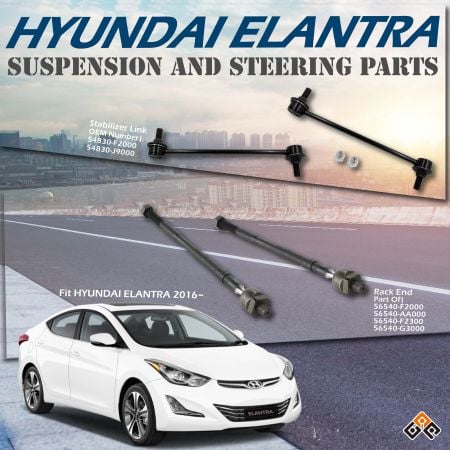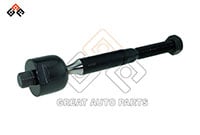How to Properly Align Your Car After Tie Rod Replacement
Replacing your tie rods is a big step toward improving your vehicle’s steering and handling, but the job isn’t complete until your wheels are properly aligned. Misalignment after tie rod replacement can lead to uneven tire wear, poor handling, and even safety issues on the road. Whether you’re tackling alignment as a DIY project or heading to a professional shop, understanding the process is critical for maintaining a smooth and safe ride.
What is Car Alignment and Why is It Necessary After Replacing Tie Rods
Car alignment refers to the precise positioning of your wheels relative to the car’s suspension and steering components. After replacing tie rods, alignment adjustments are often required because the new parts can shift the wheels’ angles, affecting how they meet the road. Proper alignment is key to avoiding steering pull, uneven tire wear, and a bumpy ride.
Tie rods are directly connected to the steering system, and even small adjustments during replacement can throw your alignment out of spec. That’s why every tie rod replacement should be followed by alignment checks and adjustments.
Tools You’ll Need for DIY Alignment
Before starting, gather these tools and materials to make the process as smooth as possible:
| Tool | Purpose | Usage Notes |
| Wrenches | To loosen and tighten jam nuts on the tie rods. | Use adjustable or specific-size wrenches for jam nuts. Ensure a firm grip to avoid stripping the nuts. |
| Jack and Jack Stands | To safely lift and stabilize the car while working on the tie rods. | Always use jack stands for stability. Avoid relying solely on a car jack, as it may slip. |
| String Alignment Kit | To check and adjust the toe angle of the wheels. | Stretch the string parallel to the tires to measure toe-in or toe-out. Affordable and effective for DIYers. |
| Measuring Tape | To measure distances between tire edges to verify alignment. | Ensure measurements are precise and consistent on both sides of the car. |
| Toe Plates | To measure and adjust the toe angle accurately. | Place on the front and rear edges of the tires. Easy to use and more accurate than string methods. |
| Laser Alignment Tools | For professional-grade precision when aligning the wheels. | Optional but highly effective for exact adjustments. Requires a flat surface for optimal accuracy. |
| Torque Wrench | To tighten bolts and nuts to the manufacturer’s specifications. | Prevents over-tightening, which could damage components, or under-tightening, which may cause loosening. |
| Penetrating Oil | To loosen rusted or stuck jam nuts. | Apply to stubborn bolts and wait a few minutes for it to penetrate. |
| Gloves and Safety Glasses | To protect your hands and eyes during the alignment process. | Prevent injuries when handling sharp tools, grease, or debris. |
Having the right tools will save time and ensure that your adjustments are precise.
Steps to Align Your Car After Replacing Tie Rods
Follow these steps to realign your wheels at home or as a guide to understand what a professional shop will do:
Park on a Flat Surface
Position your car on a flat, even surface to get accurate measurements. Uneven ground can throw off your alignment readings. Use wheel chocks to prevent movement.Check Initial Alignment
Use a simple string or tape measure method to check your alignment. Place the string along the sides of the front and rear wheels to see if the front wheels are pointing inward (toe-in) or outward (toe-out).Loosen the Tie Rod Jam Nuts
Locate the jam nuts securing the tie rods to the inner tie rods. Use a wrench to loosen them, but avoid fully removing them. This step lets you adjust the tie rod position without damaging the system.Adjust Tie Rods
Rotate the tie rods to correct toe alignment. Turning the tie rod inward will pull the front of the wheel closer, while turning it outward will push the wheel away. Adjust both sides incrementally to avoid overcorrecting.Measure and Recheck
Re-measure after each adjustment. Aim for equal spacing between the front and rear edges of the tires. Double-check your work before moving to the next step.Tighten Everything
Once satisfied with the alignment, tighten the jam nuts securely to lock the tie rods in place. Be careful not to over-tighten, as this could damage the components.Test Your Work
Drive the car on a quiet, flat road to see if it tracks straight. Pay attention to any pulling or vibrations, as these could indicate further adjustments are needed.
Common Mistakes to Avoid
| Mistake | Why It’s a Problem | How to Avoid It |
| Skipping Initial Measurements | Leads to improper adjustments, as you lack a baseline reference for corrections. | Use a measuring tape, string alignment kit, or toe plates to assess the current alignment before starting. |
| Over-Tightening Jam Nuts | Can strip threads or make future adjustments difficult. | Use a torque wrench to tighten the nuts according to the manufacturer’s specifications. |
| Adjusting Both Sides Unevenly | Creates uneven alignment, causing the car to pull to one side. | Adjust both sides incrementally and re-measure after each adjustment. |
| Ignoring Wheel Angles Beyond Toe | Overlooks other alignment problems, leading to improper handling or uneven tire wear. | Check for visible signs of camber or caster issues, and consult a professional if needed. |
| Not Testing Alignment Post-Adjustment | Leaves alignment issues undetected, such as pulling or vibrations during normal driving. | Perform a short test drive on a flat road to confirm that the car tracks straight and handles smoothly. |
| Overlooking Tire Pressure | Uneven tire pressure skews measurements and alignment settings. | Check and adjust tire pressure to the manufacturer’s recommended levels before starting the alignment process. |
| Using Improper Tools | Leads to inaccurate adjustments or damaged components. | Invest in proper tools or borrow from an auto parts store that offers tool loan programs. |
| Ignoring Manufacturer’s Torque Specs | Risks under-tightening, causing loosening, or over-tightening, causing damage. | Refer to the vehicle’s service manual for exact torque specifications and use a torque wrench to apply them. |
| Misinterpreting Measurements | Results in incorrect adjustments and misaligned wheels. | Double-check measurements at multiple points along the tires and cross-reference with initial readings. |
| Forgetting to Secure the Steering Wheel | Leads to misaligned steering, where the steering wheel appears off-center while driving straight. | Use a steering wheel lock or similar tool to keep the steering wheel fixed during alignment. |
How Tie Rod Replacement Impacts Wheel Alignment
Replacing tie rods affects your car’s steering and wheel alignment because tie rods are critical to how your wheels interact with the road. They connect the steering system to the wheels and ensure that steering inputs translate into precise wheel movement. When you replace tie rods, even a small change in length or adjustment can alter the alignment, particularly the toe angle, which determines whether your tires point inward (toe-in) or outward (toe-out).
Improper alignment after replacing tie rods can cause noticeable issues. You may experience your car pulling to one side, an off-center steering wheel, or vibrations while driving. These problems affect handling and safety, but they also lead to uneven tire wear, lower fuel efficiency, and additional stress on suspension components. Over time, these issues can result in costly repairs and a less enjoyable driving experience.
Realigning your wheels after replacing tie rods is essential to restore your vehicle’s handling and prevent long-term damage. Proper alignment adjusts the toe angle and ensures the wheels are positioned straight and evenly. While DIY alignment tools like a string kit or toe plates can help you make basic adjustments, professional alignment equipment offers the accuracy needed to fine-tune your car’s steering geometry. By addressing alignment after tie rod replacement, you protect your tires, improve handling, and maintain a safer, more reliable ride.




